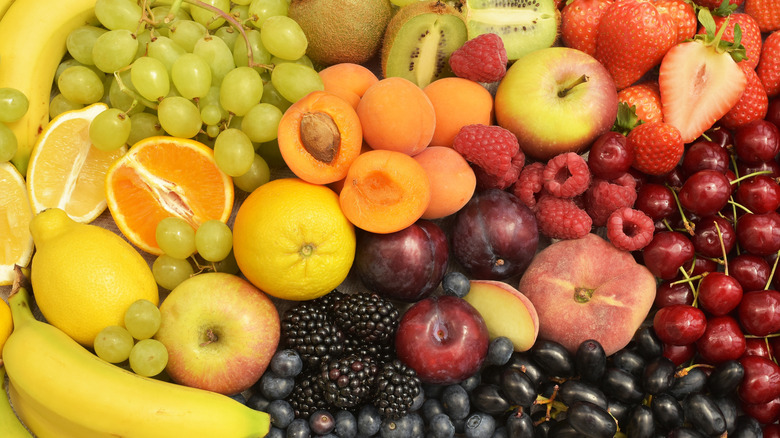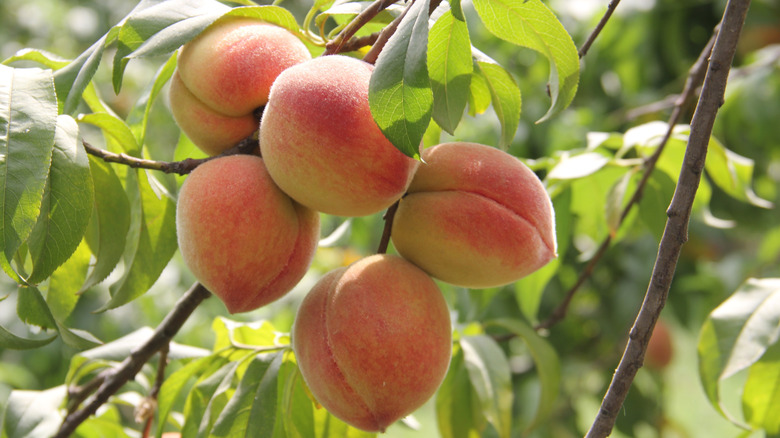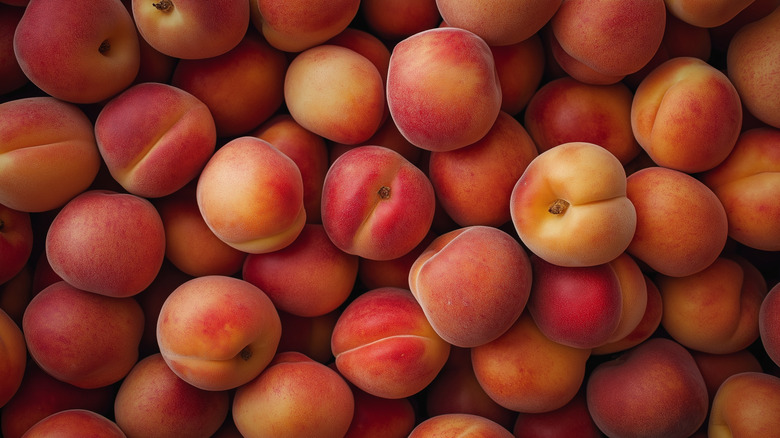The Fastest-Growing Fruit Trees You Should Add To Your Garden
If you love fresh fruit, you've probably considered growing your own fruit trees. What could be better than a freshly picked apple or pear that you put hard work into growing yourself? Unfortunately, though, it can take quite a while for fruit trees to mature to the point of regularly producing usable fruit. If you want quicker results when planting fruit trees, consider planting one of the fastest-maturing varieties: a peach tree.
Peach trees grow quite a bit faster than other trees, meaning that although the actual fruits can still take a while to start growing, you'll get the pleasure of seeing the tree grow larger and larger and even bloom in the spring while you wait. For this reason, they're often recommended as privacy trees, as they'll grow to a sizable height before other fruit trees would. If you buy a sapling from a nursery (which usually ships one- to two-year-old trees), you could end up with a peach harvest as soon as two years after planting it on your property, and should definitely see results by year three or four. Compare this to apple trees, which can take up to five years, or pear trees, which can take up to six, and you'll see that peach trees are a great choice if you want a quick turnaround on fruit. Some people even get small amounts of fruit the first year of planting, which you can pick early and let ripen off the tree.
How to care for a peach tree
While peach trees do grow fast, they are not low-maintenance crops. You'll need to prune them regularly and ensure that the soil has the right nutrient levels if you want the tree to thrive. They can be grown in climate zones 4 through 9, which means they're viable throughout most of the United States. However, you might want to look into heat- or cold-resistant varieties depending on your area, as some will not be able to produce much fruit in certain weather conditions even if they're technically in the right zone.
You'll need to plant the tree somewhere that gets at least 8 hours of direct sun a day, and the soil should stay moist for the best growing conditions. Rough soil won't be suitable for a peach tree; it should be loose and nutrient-rich. While you can grow peach trees from a seed, if you want a quick turnaround on fruit, you'll need to get a nursery start. Plant it in early spring (after the last frost of the season is always a good bet), and be sure to regularly water, prune, and fertilize the tree, especially in the early years. If you want to use more natural fertilizer, eggshells are a great way to give extra nutrients. A properly cared for peach tree grown from a start should bear fruit around year three or four, and can continue to do so for around 15 years.
What to do with fresh, home-grown peaches
Once your peach tree is fully matured, it could produce well over 200 pounds of peaches a year, and even dwarf trees can sometimes produce over 100 pounds annually. This means you're going to have a ton of peaches, so you'll need to get creative in how to use them if you don't just want to eat peach cobbler over and over again. Luckily, there are lots of peach recipes you can employ to use up your stock of fresh fruit.
Of course, the peaches can be eaten by themselves, and they're full of antioxidants and other helpful minerals that will keep you feeling great. They can also be turned into jam and jarred, creating the perfect spread for bread and baked goods. For more creative uses, however, peaches are also great in salads, such as this grilled halloumi and peach salad. Peach can also be a great ingredient to incorporate into fruity cocktails, such as a sriracha-peach smash or peach royale.
Home-grown peaches also make excellent (and virtually free) gifts for friends and family. If you really have more than you know what to do with, you can always sell them at a local farmer's market; just be sure to comply with any regulations set in the area you live in. Regardless, you'll be pleased with all the delicious fruit you get, as well as the beautiful tree in your yard.


